
A thriving garden ecosystem is like a world in miniature.
Right under our noses, there’s a constant struggle for survival going on. Between battles for food and territory, mating rituals and courtship, unlikely friendships between species, ingenious defense mechanisms and predation methods that have been finely tuned over many millennia – the complex interactions between insects, invertebrates, amphibians, birds, and mammals are beyond fascinating, if only we’d notice.
The intricate web of life can be established from the smallest of things.
A rose bush colonized by aphids, for example, supports an enormous range of wildlife.
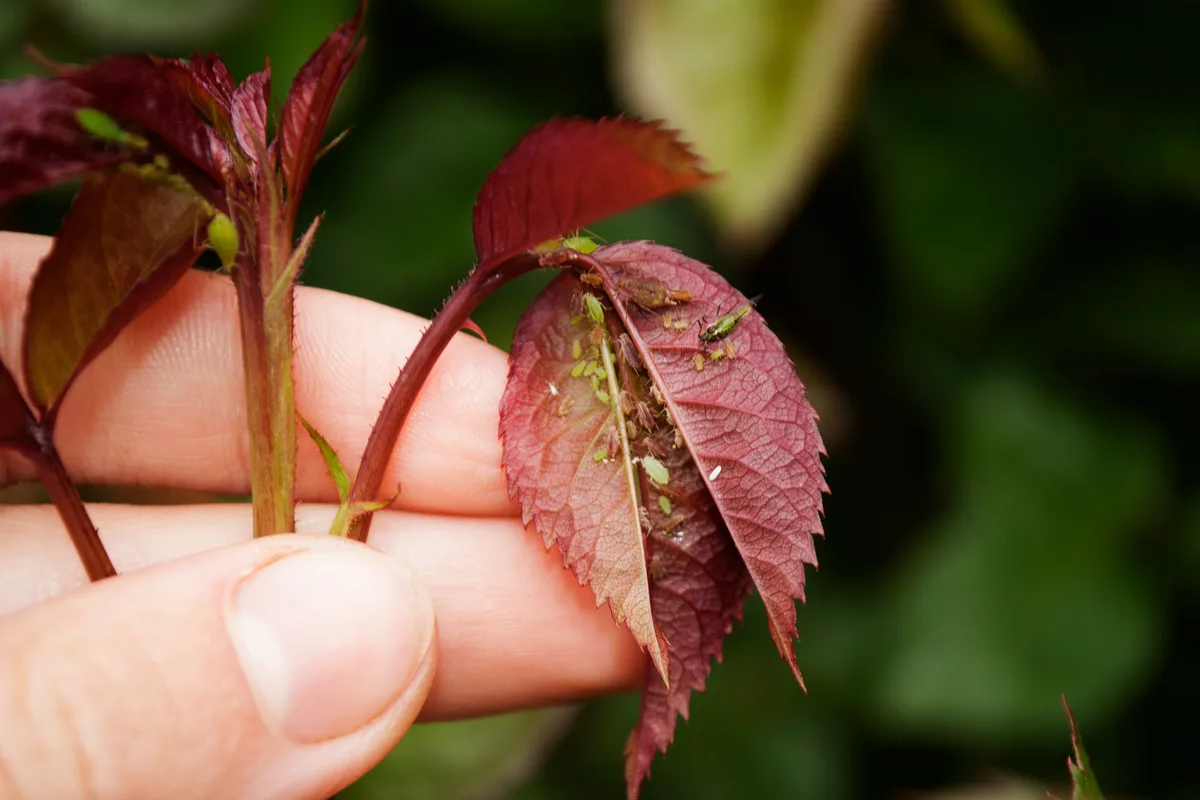
The aphids are an excellent meal for hover fly and lady beetle larvae, and the honeydew they produce also feeds ants, wasps, bumblebees, and other nectar-sipping bugs. Birds and bats will hunt down these and many other insects, while larger predators feed on them. It’s amazing that all this life can be seeded from tolerating a cluster of aphids in your roses!
Garden biodiversity is a key principle of permaculture and there’s much you can do to foster a rich tapestry of life in your own backyard. Maintaining balance is key and you will need to endure the presence of a few pests to spur more beneficial insect activity in your landscape.
To encourage more beneficial insects in your garden, it’s important to learn how to recognize them.
One such good guy that you definitely want to see is the lacewing.
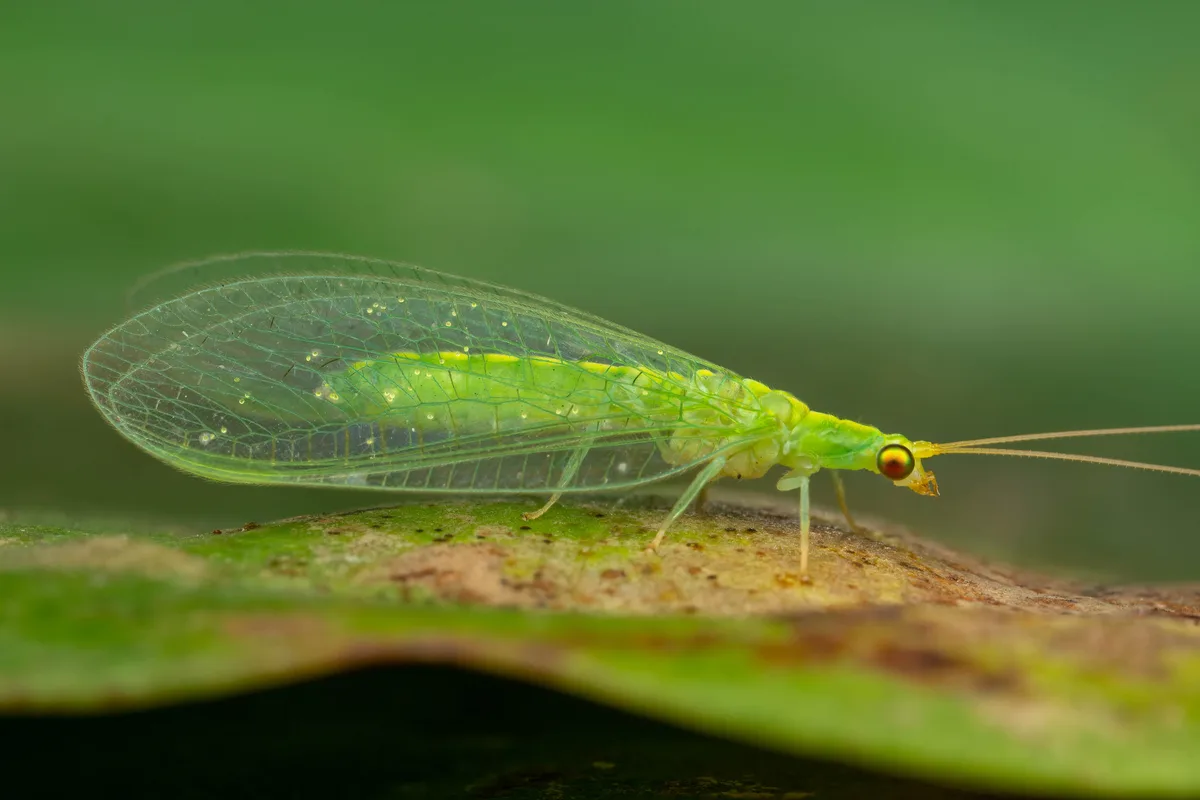
More elusive than other beneficial insects, lacewings often work behind the scenes to keep the garden in equilibrium.
How to Identify Lacewings
Lacewings are beautiful and delicate insects, small, nocturnal, and often overlooked. They are easy to identify but their larvae look completely unlike the adults.
Adult Lacewings
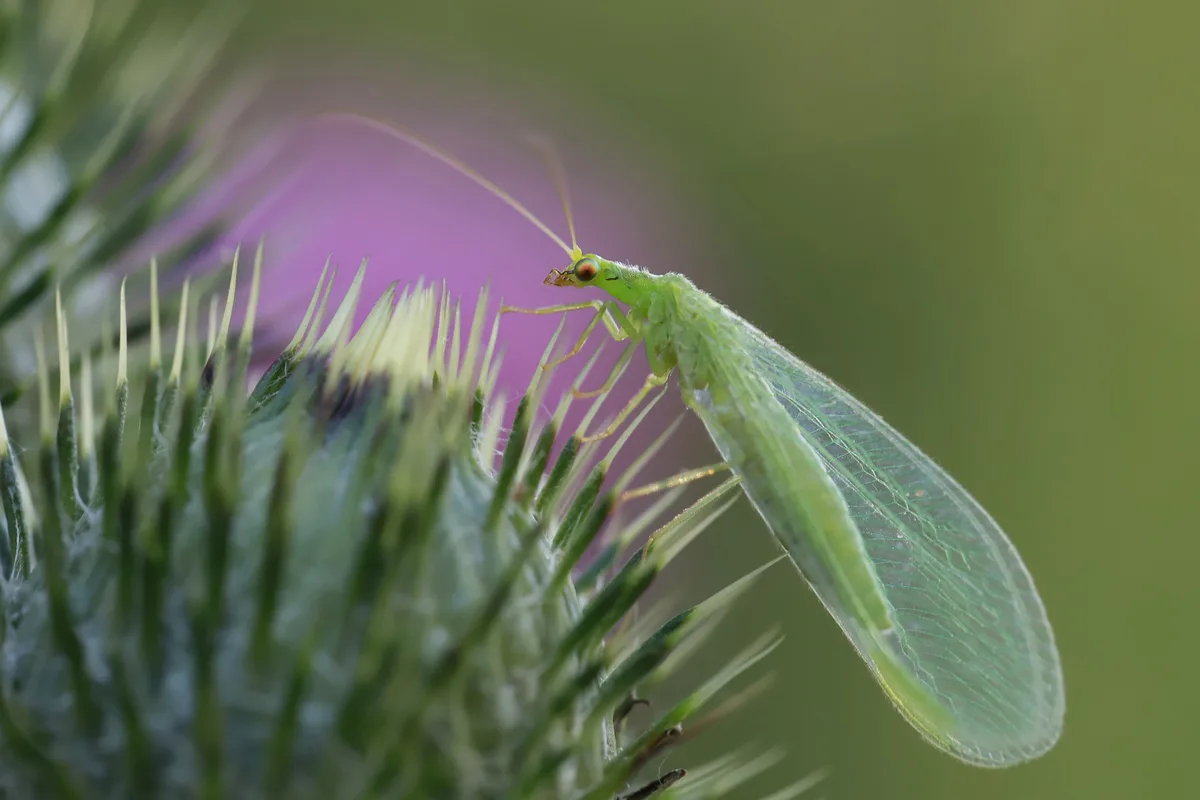
Green lacewings (Chrysopidae) and brown lacewings (Hemerobiidae) are the most commonly sighted lacewings in North America.
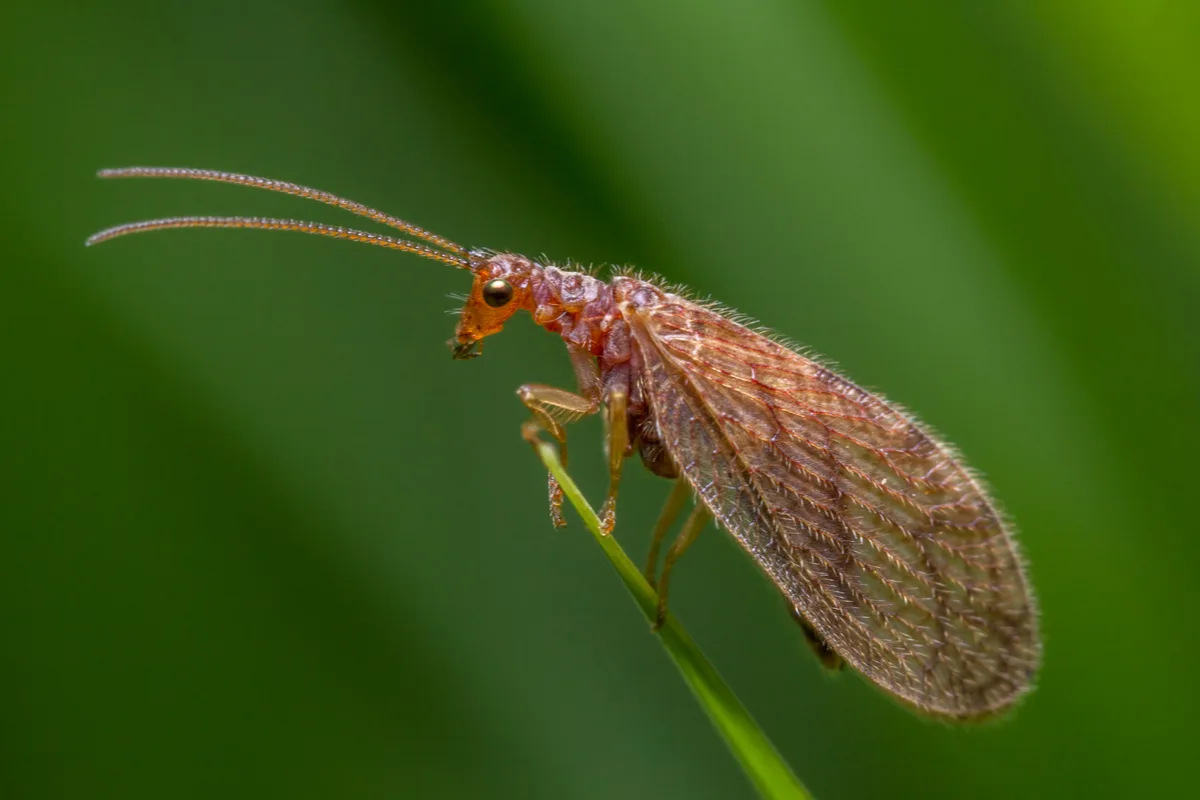
Most active after dusk, lacewings are weak fliers that can be glimpsed flitting near lights on summer evenings. During the daytime, they can be spotted hiding on the underside of leaves. Lacewings are peaceful creatures that don’t sting or bite.
Adult lacewings are excellent little pollinators in their own right, feeding on flower nectar and pollen during the night shift.
Green lacewings grow to be about a half inch in length, with long and slender bodies that look most similar to dragonflies. They have long antennae, large golden or copper colored eyes, and range from bright to dull shades of green to best blend in with plant foliage.
The lacewing’s most prominent feature and namesake are two pairs of large, finely-veined wings that are held, roof-like, over the body.
Brown lacewings resemble green lacewings but are smaller and dark to light brown in color. The wings are also lacy but may be flecked and spotted in shades of brown.
Lacewing Larvae
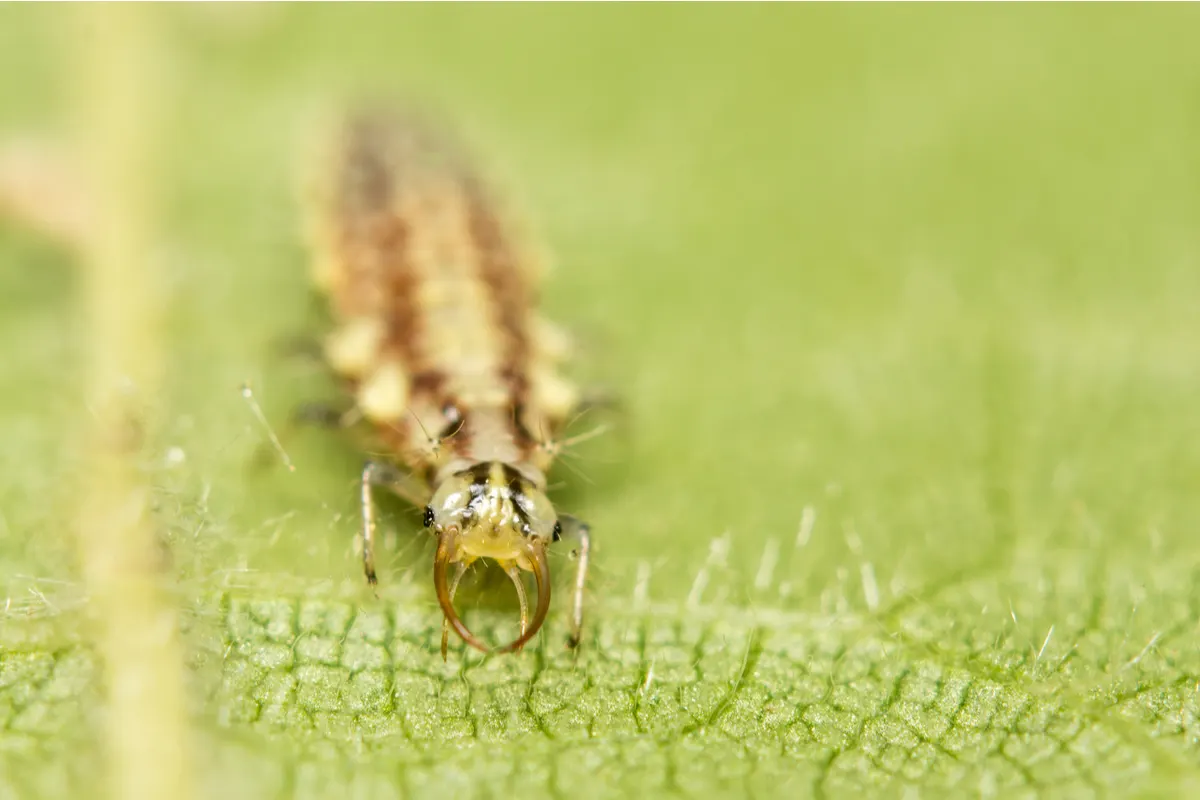
Lacewing larvae – fondly dubbed “aphid lions” due to their voracious appetite – are about 3/8-inch in length. They are mottled brown with flat and elongated bodies, widest in the middle and tapering at the tail. This makes them look like tiny alligators.
Less peaceful than mature lacewings, aphid larvae have large protruding jaws equipped with a pincher and sucking mouthparts that capture and drain fluids from unsuspecting insects:
Some species of lacewing larvae can hold debris on their backs to camouflage themselves and surprise their victims.
And the victims are many – as generalist predators, lacewing larvae will attack any soft-bodied insect they come across.
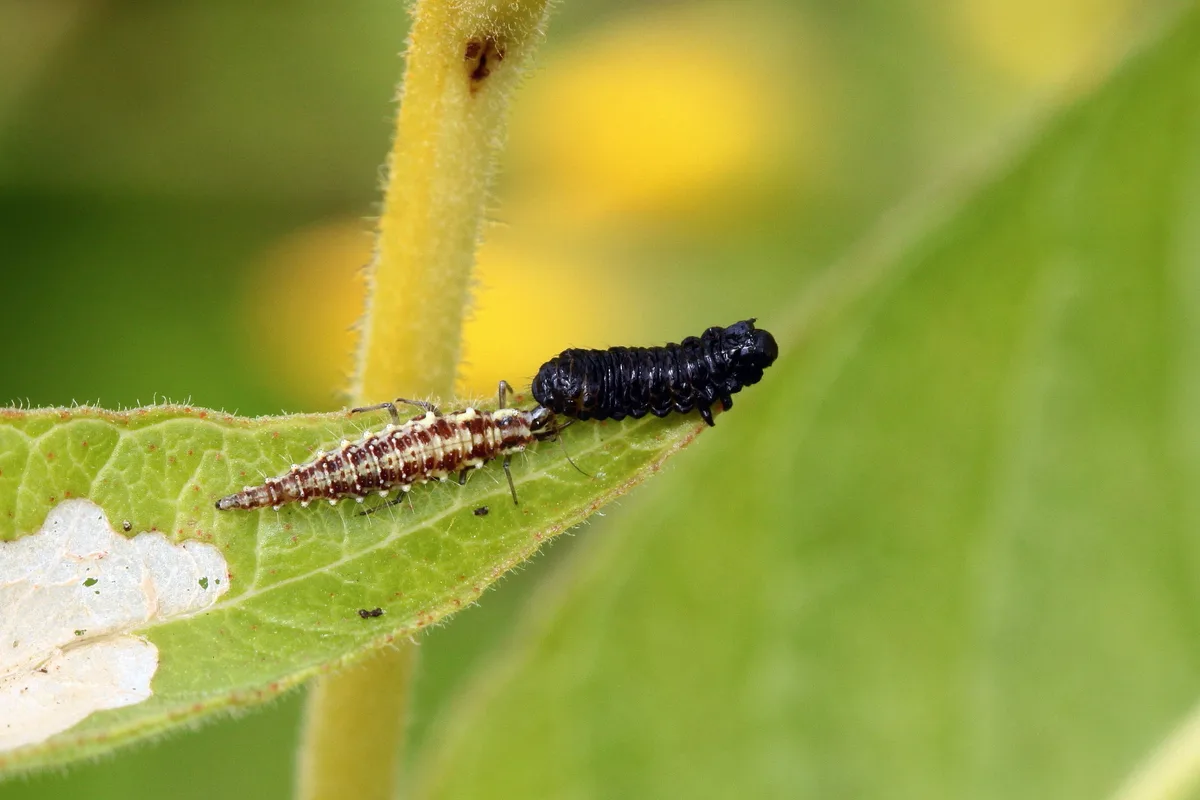
Aphids, mealybugs, mites, thrips, whiteflies, leafhoppers, psyllids, small caterpillars, insect eggs, spiders – and even other lacewings – are no match for the insatiable hunger of lacewing larvae. One aphid lion can eat around 150 aphids per week.
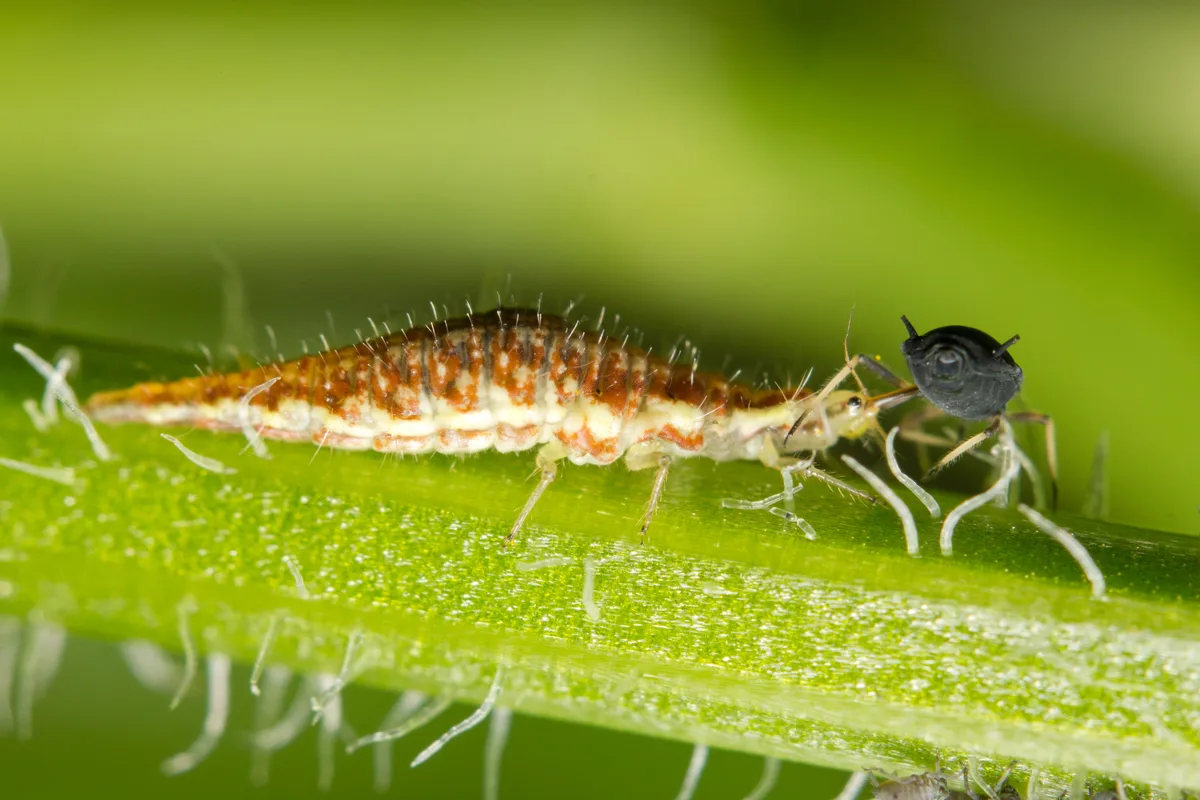
The larvae have six very nimble legs which allows them to quickly scurry over the foliage. When you have a healthy lacewing population, you’ll see them zipping across the underside of leaves and up and down stalks.
The larval stage can last several weeks before the aphid lions pupate into adults. Up to five generations can be hatched throughout the warmer months, providing terrific pest control all season long.
Lacewing Eggs
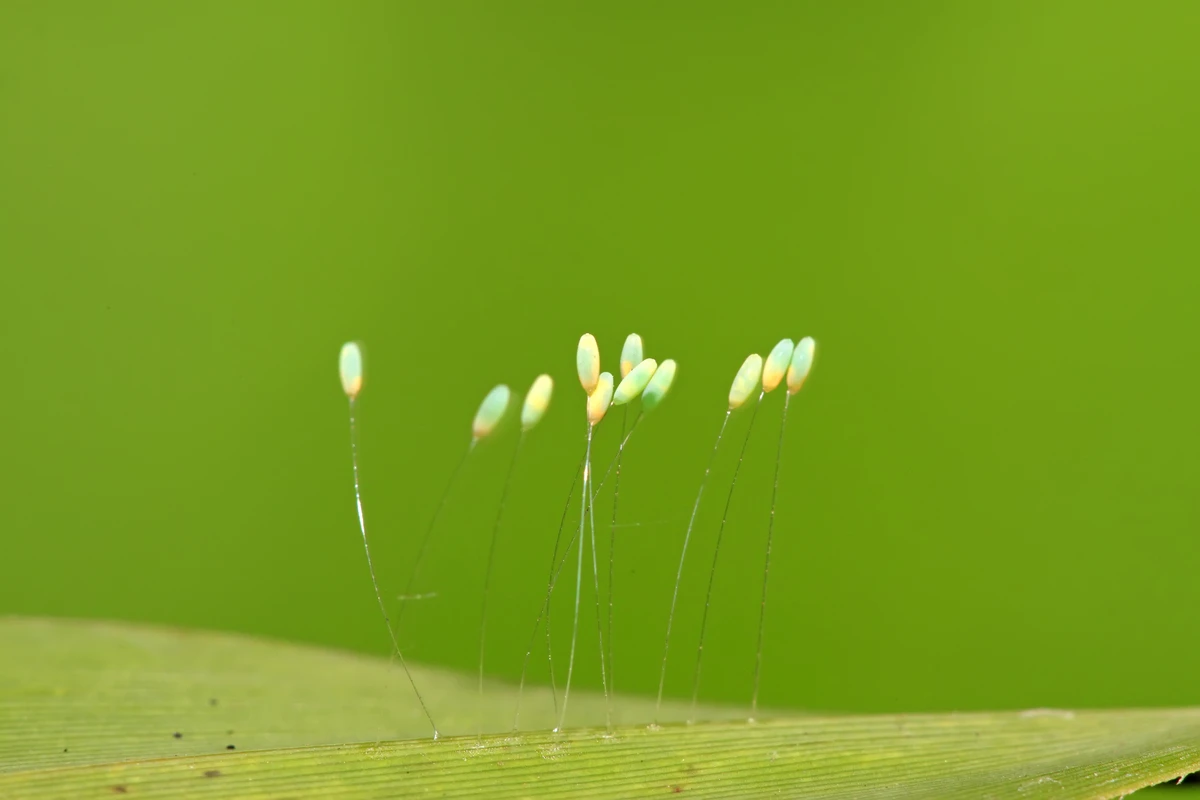
Female lacewings choose where they lay their eggs carefully, typically near good feeding sites like aphid colonies.
While brown lacewings deposit the eggs in clusters directly on the surface of leaves, green lacewings have a very distinctive method of egg-laying:
Seemingly suspended in mid-air, the eggs are deposited, one at a time, at the ends of silk thread about a half-inch long. This unique adaptation keeps the eggs off the foliage to keep them safe from marauding predators.
A single female lacewing can lay up to 30 eggs a day and 300 over her lifetime. If you see these strange dangling dots hanging from your plant’s leaves, don’t disturb them and let nature run its course.
4 Ways to Support Lacewings in the Garden
To help get lacewings established in your landscape, make your garden as appealing to them as possible during all stages of life. When you create a good habitat for them, lacewings will overwinter nearby, returning year after year to defend the garden.
1. Grow a Diverse Mix of Flowers

Adult lacewings need good sources of pollen and nectar to sustain them between bouts of mating and egg-laying.
Send out a clarion call to lacewings and other beloved pollinators by growing a diverse mix of nectar-rich flowering plants. Native plants are the best attractants, but more importantly, your flower gardens should be continuously blooming from early spring to late autumn.
To cater specifically to lacewings, choose flat and broad flowers that have an easily accessible floral disk.
Some of the lacewing’s favorite blooms include many species from the Asteraceae family such as coreopsis, cosmos, daisies, and sunflowers.
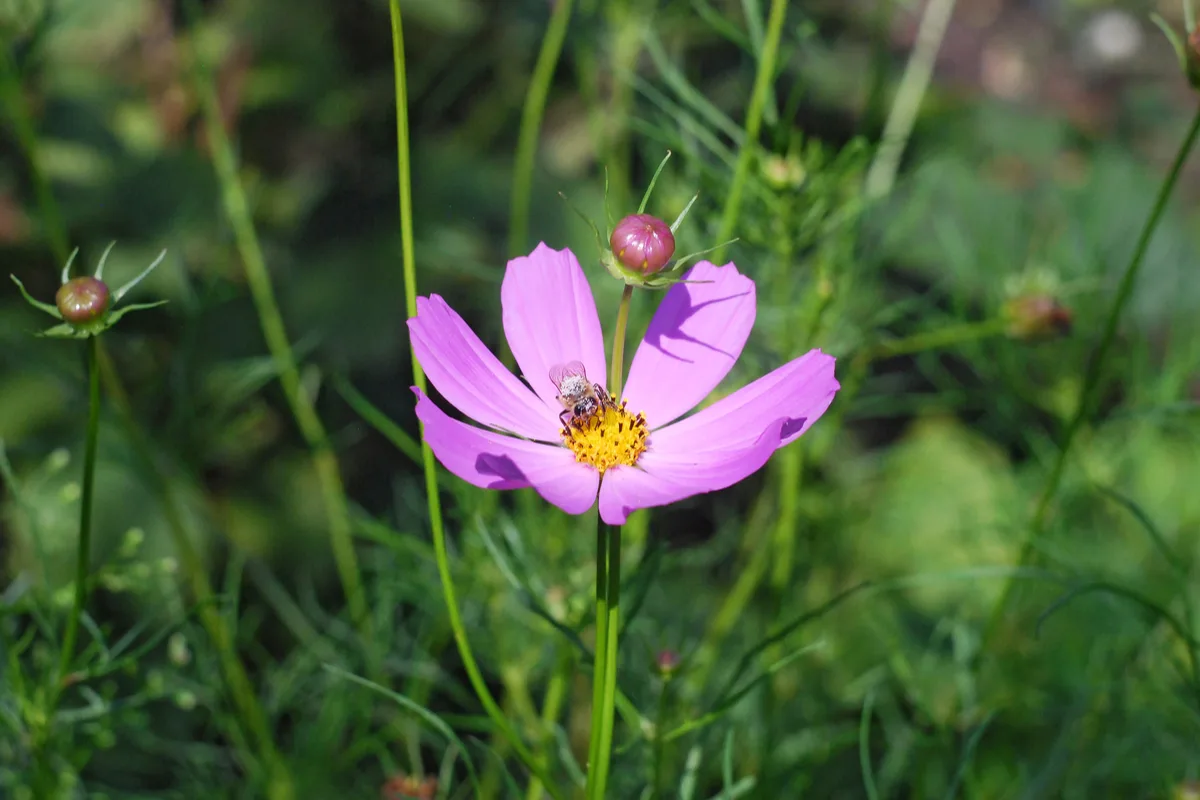
They are also fans of yarrow, angelica, dill, and other flat-topped umbellifers.
2. Supply Water
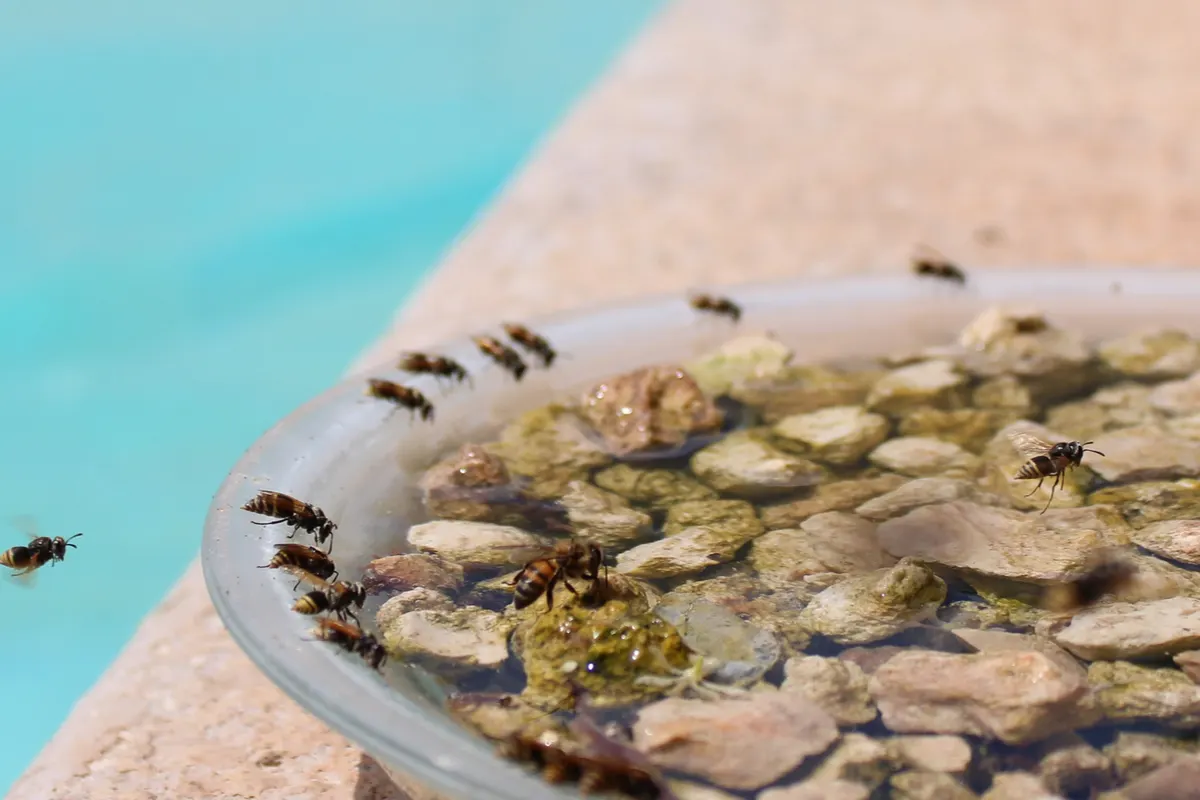
Beneficial insects will always stick close to habitats where food and water are abundant.
Take your pollinator paradise to the next level by giving your resident bugs a steady supply of clean water.
Lacewings, bees, butterflies, wasps, and other helpful allies will appreciate a shallow pool where they can rehydrate safely.
The principles of a bee watering station also applies to lacewings and other insects that can’t land directly on the surface of water.
Bird baths, glass casserole dishes, Frisbees, or other shallow pans can be used to put out water – just pile up some pebbles in the dish to keep them safe and dry while they drink.
3. Tolerate Light Aphid Outbreaks
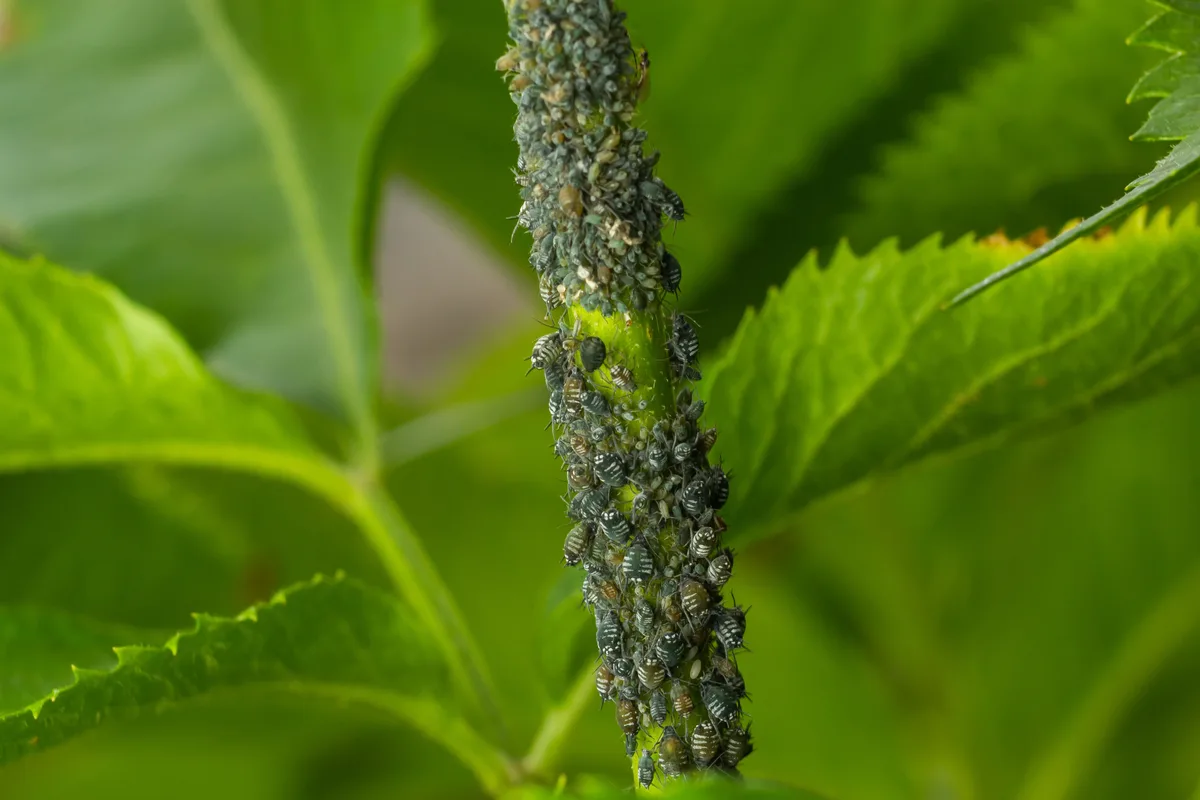
It may go against your every instinct as a gardener, but spotting an aphid colony among your plants can be a wonderful thing.
Aphids are an important food source for lacewing, lady beetle, and hover fly larvae. Without aphids present, your lands will be less attractive for the adults to lay eggs.
Resist the urge to immediately spritz affected plants with soapy water or neem oil. Instead, take a wait-and-see approach.
If you don’t see larvae on patrol, you can help lacewings discover your aphid problem by lightly spraying plants with sugar water. This will simulate honeydew, which will increase the number and activity of adult lacewings in the garden.
To make a honeydew solution, dissolve 1 tablespoon of sugar into 1 cup of water and gently spritz plant foliage.
4. Purchase a Lacewing Starter Community
Lacewings provide such excellent biological pest control that they are readily available to purchase from gardening catalogs and websites.
Here’s an Amazon listing for 1,000 green lacewing eggs.
Common green lacewing (Chrysoperla rufilabris) is the species you’re most like to see for sale. This lacewing is widespread throughout North America and its larvae are especially effective for preying on a large number of agricultural pests.
Lacewing larvae are wingless and will stay where you release them, provided there are pests around to hunt.
Usually sold by the thousand, you can purchase common green lacewing eggs or freshly hatched larvae. Once received, lacewings should be released in the garden or greenhouse right away.
To seed the garden with lacewing eggs, you can sprinkle them in the whorls of leaves or in paper cups that are nestled between rows. Distribute them throughout the landscape, in both ornamental and vegetable gardens.
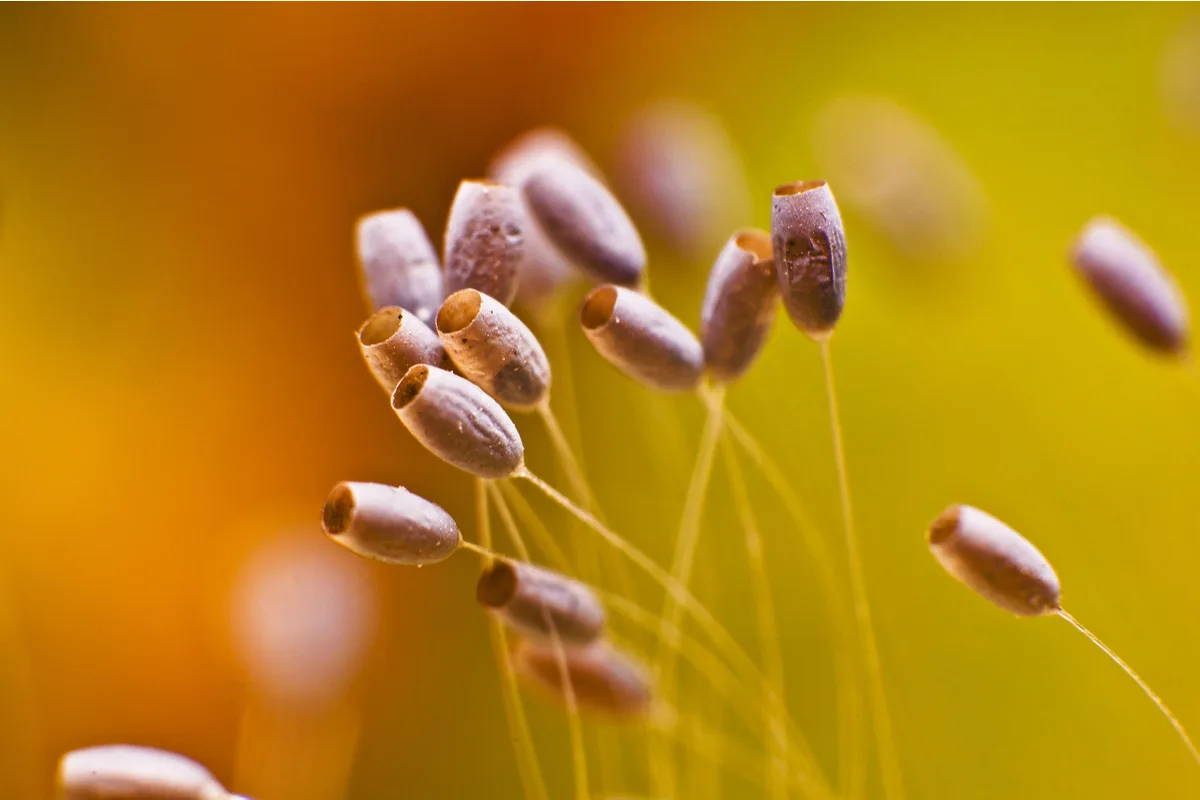
When you purchase lacewings as larvae, they come separated in honeycomb cells so they don’t cannibalize each other. To release them, open up the packaging bit by bit and shake larvae out on to your plants. You’ll want to spread them out well to give your garden the best coverage.
Release lacewings early in the season to give them time to establish so subsequent generations can be hatched. Some folks like to do a second or third release, each about two weeks apart, to ensure continuous pest control.

Get the famous Rural Sprout newsletter delivered to your inbox.
Including Sunday ramblings from our editor, Tracey, as well as “What’s Up Wednesday” our roundup of what’s in season and new article updates and alerts.

